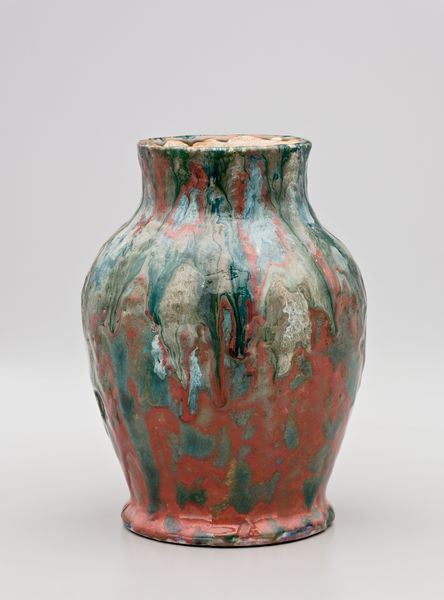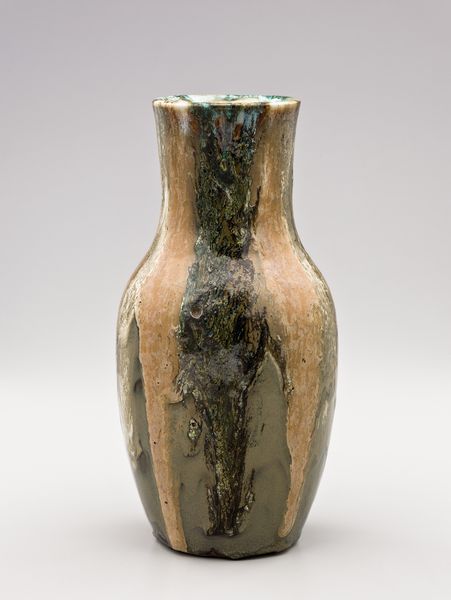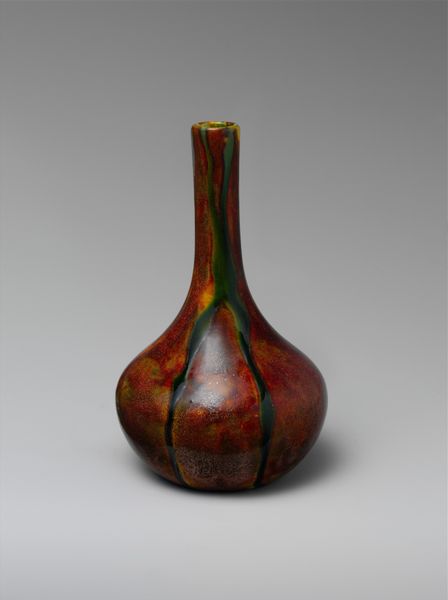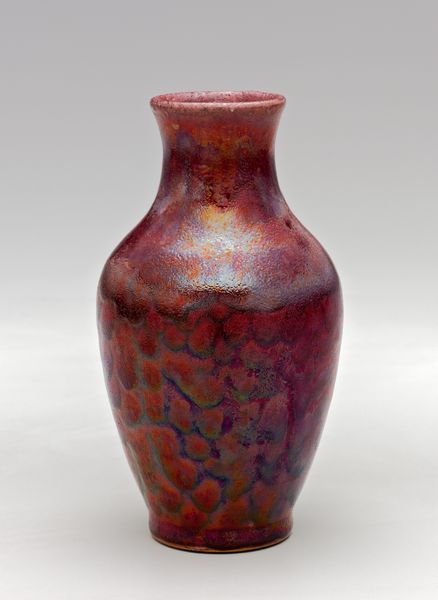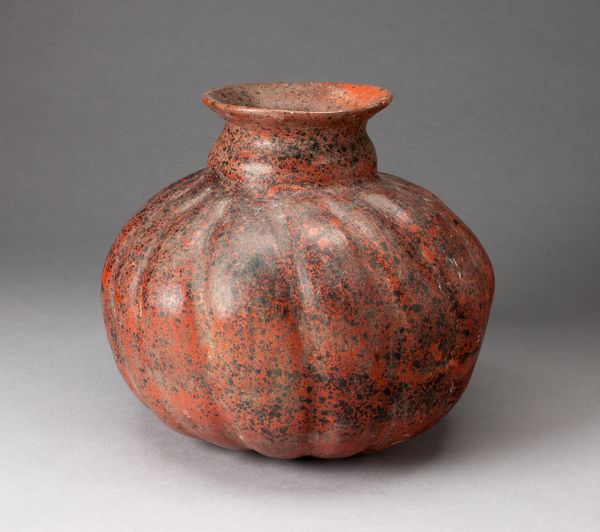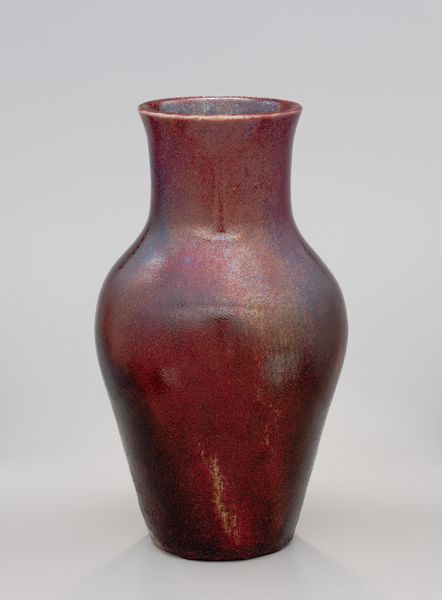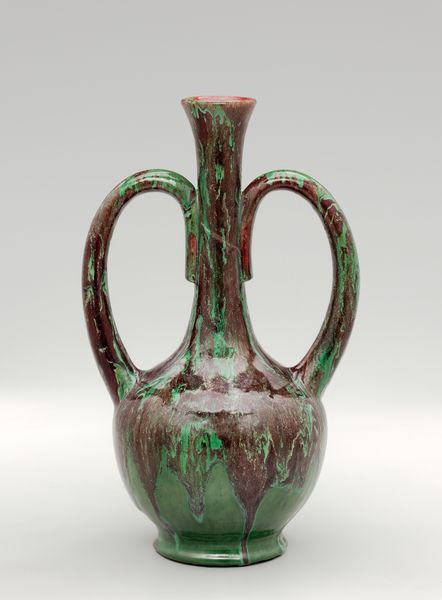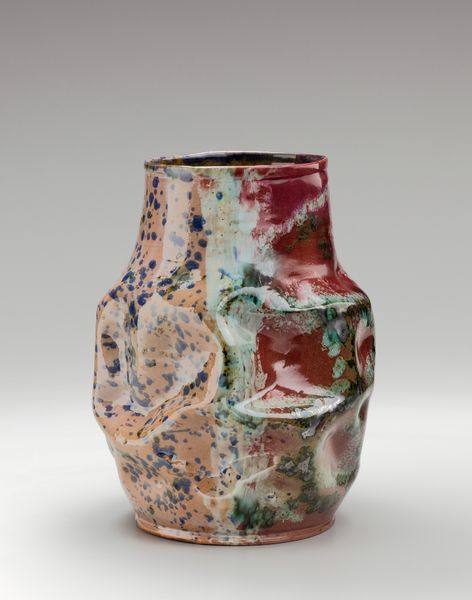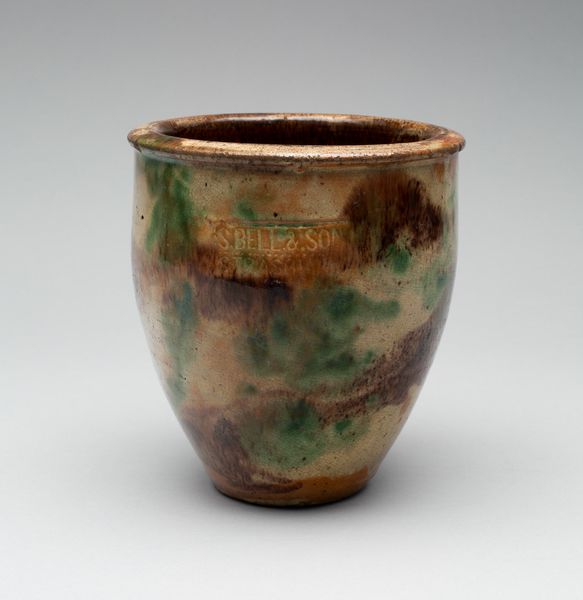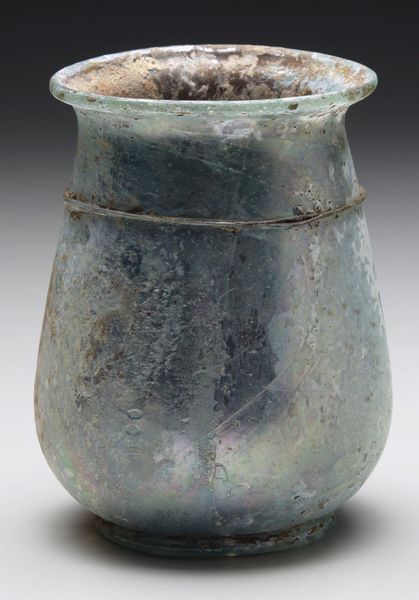
ceramic, earthenware, sculpture
#
art-nouveau
#
ceramic
#
earthenware
#
stoneware
#
sculpture
#
ceramic
#
abstraction
Dimensions: 9 13/16 x 9 in., 10lb. (24.9 x 22.9 cm)
Copyright: Public Domain
Editor: So, here we have Hugh Robertson's "Vase," created sometime between 1893 and 1911. It's currently housed here at the Met, a stoneware piece, a lovely example of ceramic art. I'm struck by its almost molten appearance. The glaze is so fluid, pooling into these rich reds and greens. How would you interpret this piece? Curator: It reminds me of a volcanic heart, bubbling with ancient energy! Robertson was a bit of a mad scientist in the ceramics world, always chasing those elusive glazes. This, to me, isn't just a vase; it's a record of alchemical experimentation. Think about the Art Nouveau movement—that fascination with natural forms, with fluidity and transformation. Do you see those elements here? Editor: Absolutely, that swirling, organic feel…it's almost as if the vase itself is growing. Curator: Precisely! Robertson was deeply invested in Asian ceramics. He experimented relentlessly to replicate the sought-after 'sang de boeuf', or 'oxblood' glaze, prized for its vibrant color. The unpredictability of the firing process gave it a kind of agency; a collaboration between artist and kiln. You mentioned it felt molten - he would've taken that as a compliment, no doubt. Editor: It’s interesting to think of it as a collaboration. You get such a sense of process. The final outcome, which is both organic and almost dangerous with those red tones, seems almost accidental. Curator: It’s a controlled accident. That's the brilliance! And think, this object, born from earth and fire, now sits quietly in a museum. What a journey. Editor: Definitely makes you appreciate the art *and* the science. I'll never look at ceramics the same way!
Comments
No comments
Be the first to comment and join the conversation on the ultimate creative platform.
